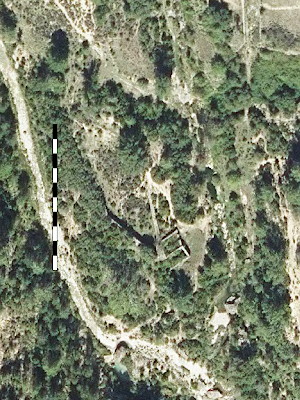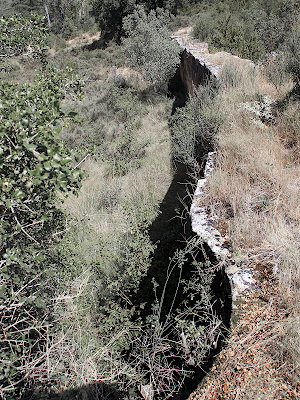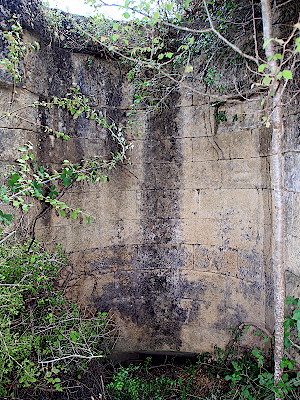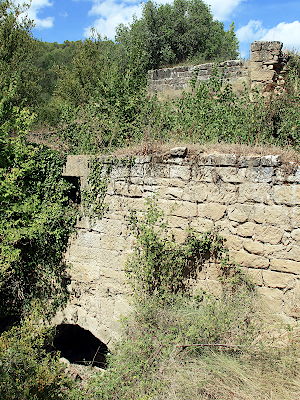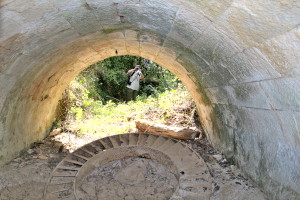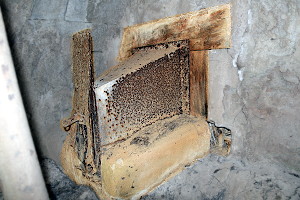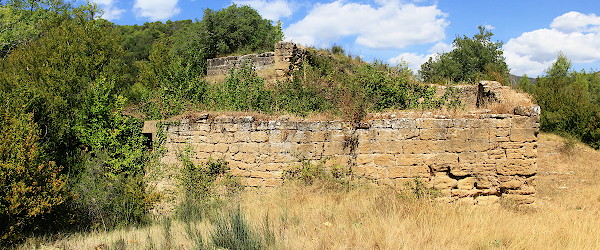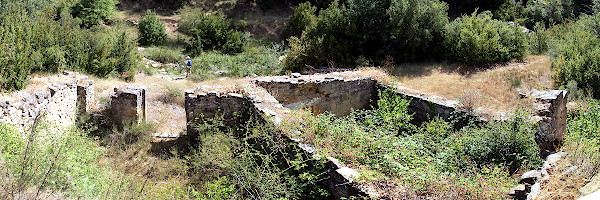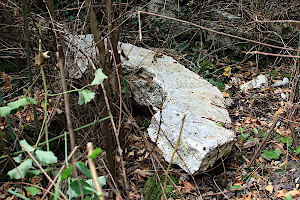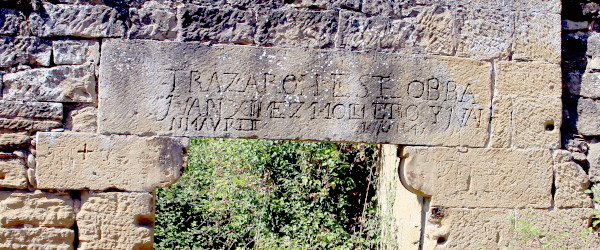The construction stands between the
Barranco de San Felices (marked on older maps as
Bco de Artaso
) and the
Barranco del Cubo
near the confluence of the two (2). Though we couldn't trace the canal back to one of the rivulets, water was supposedly taken from the former, which is a trifle wider.
Unfortunately, I couldn't find any aerial photographs of the 1927 flights of the Río Ebro basin of this area, but photos from the 1950s show that large parts of the roof then already had collapsed. Photos from 1973 show that the roof had disappeared completely. There were some tall trees on the edge of the mill pond and along the restitution canal, but the inside of the pond and of the former buildings was still completely free of vegetation.
At the time of our visit the situation was very similar to the aerial photograph of 2008 (2): the space between the walls was completely overgrown with shrubs and there were also many young trees and shrubs in the pond. In April 2011, members of the local Asociación Santa Quiteria de Agüero spent some time cleaning up the mill and its surroundings, but when we were there in 2016, it was clear that this beautiful and much needed work was to be repeated urgently.



